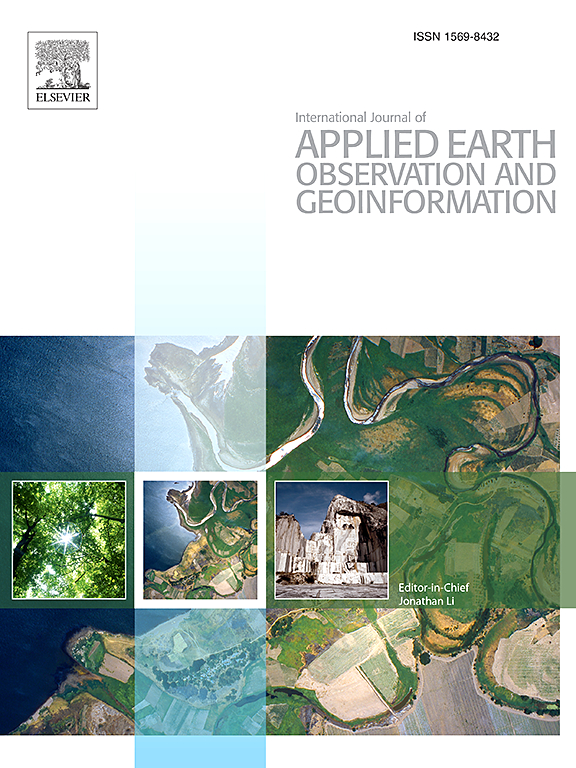Near-real-time wildfire detection approach with Himawari-8/9 geostationary satellite data integrating multi-scale spatial–temporal feature
IF 7.6
Q1 REMOTE SENSING
International journal of applied earth observation and geoinformation : ITC journal
Pub Date : 2025-02-15
DOI:10.1016/j.jag.2025.104416
引用次数: 0
Abstract
Wildfires pose a great threat to the ecological environment and human safety. Therefore, rapid and accurate detection of wildfires holds significant importance. However, existing wildfire detection methods neglect the full integration of spatial–temporal relationships across different scales, and thus suffer from issues of low robustness and accuracy in varying wildfire scenes. To address this, we propose a deep learning model for near-real-time wildfire detection, where the core idea is to integrate multi-scale spatial–temporal features (MSSTF) to efficiently capture the dynamics of wildfires. Specifically, we design a multi-kernel attention-based convolution (MKAC) module for extracting spatial features representing the differences between fire and non-fire pixels within multi-scale receptive fields. Moreover, a long short-term Transformer (LSTT) module is used to capture the temporal differences from the image sequences with different window lengths. The two modules are combined into multiple streams to integrate the multi-scale spatial–temporal features, and the multi-stream features are then fused to generate the fire classification map. Extensive experiments on various fire scenes show that the proposed method is superior to JAXA Wildfire products and representative deep learning models, achieving the best accuracy scores (i.e., average fire accuracy (FA): 88.25%, average false alarm rate (FAR): 20.82%). The results also show that the method is sensitive to early-stage fire events and can be applied in the task of near-real-time wildfire detection with 10-minute Himawari-8/9 satellite data. The data and codes used in the study are detailed in: https://github.com/eagle-void/MSSTF.
求助全文
约1分钟内获得全文
求助全文
来源期刊

International journal of applied earth observation and geoinformation : ITC journal
Global and Planetary Change, Management, Monitoring, Policy and Law, Earth-Surface Processes, Computers in Earth Sciences
CiteScore
12.00
自引率
0.00%
发文量
0
审稿时长
77 days
期刊介绍:
The International Journal of Applied Earth Observation and Geoinformation publishes original papers that utilize earth observation data for natural resource and environmental inventory and management. These data primarily originate from remote sensing platforms, including satellites and aircraft, supplemented by surface and subsurface measurements. Addressing natural resources such as forests, agricultural land, soils, and water, as well as environmental concerns like biodiversity, land degradation, and hazards, the journal explores conceptual and data-driven approaches. It covers geoinformation themes like capturing, databasing, visualization, interpretation, data quality, and spatial uncertainty.
 求助内容:
求助内容: 应助结果提醒方式:
应助结果提醒方式:


